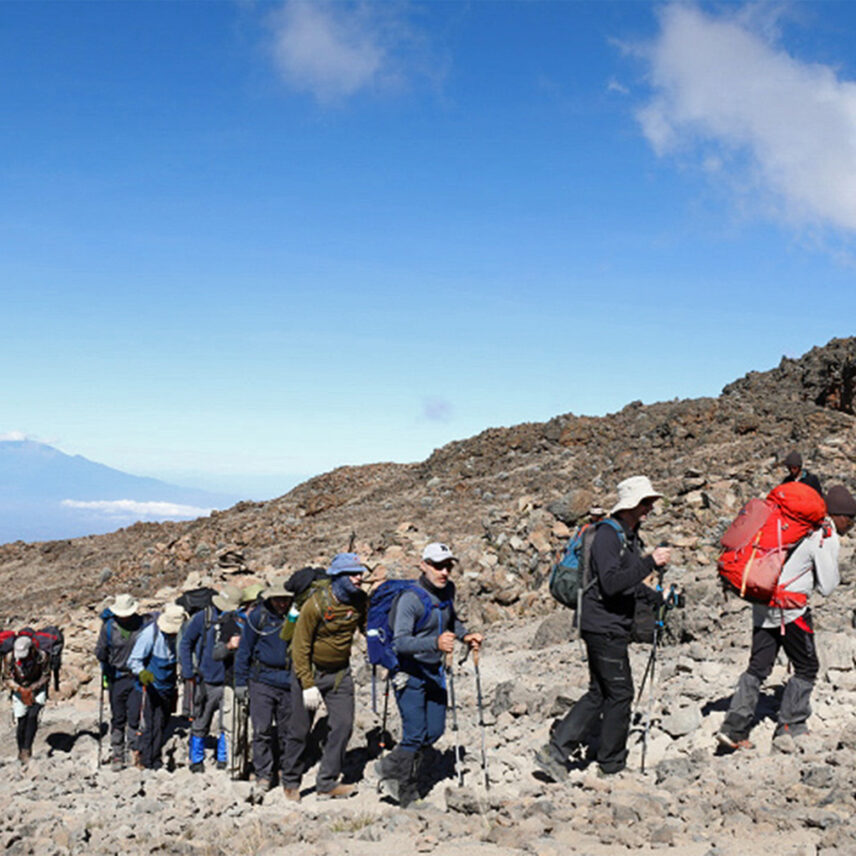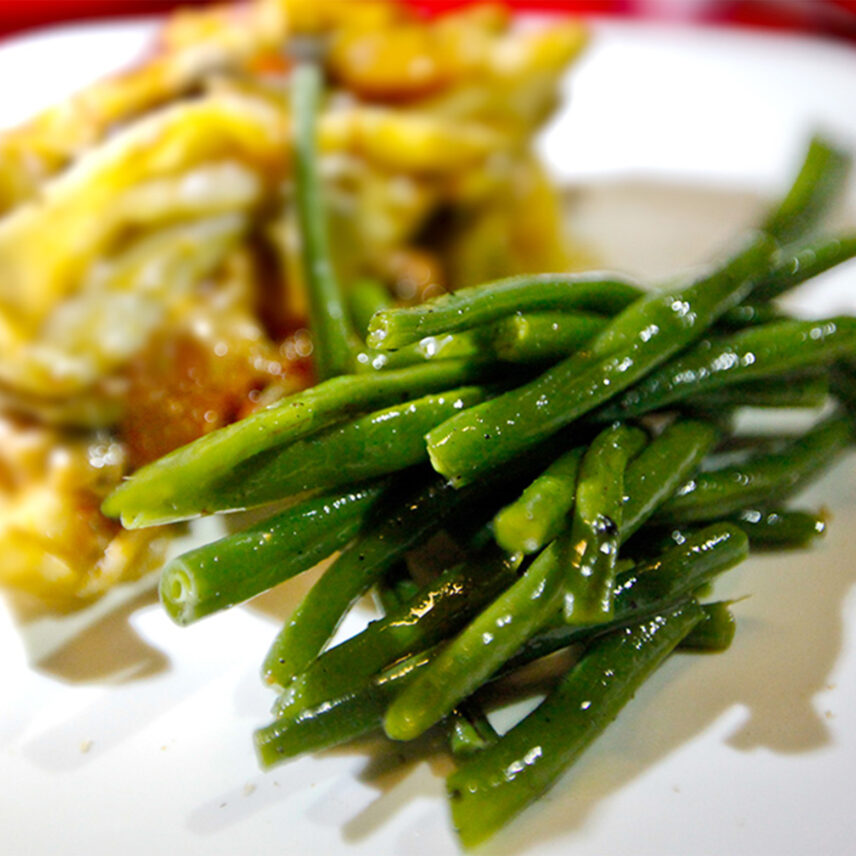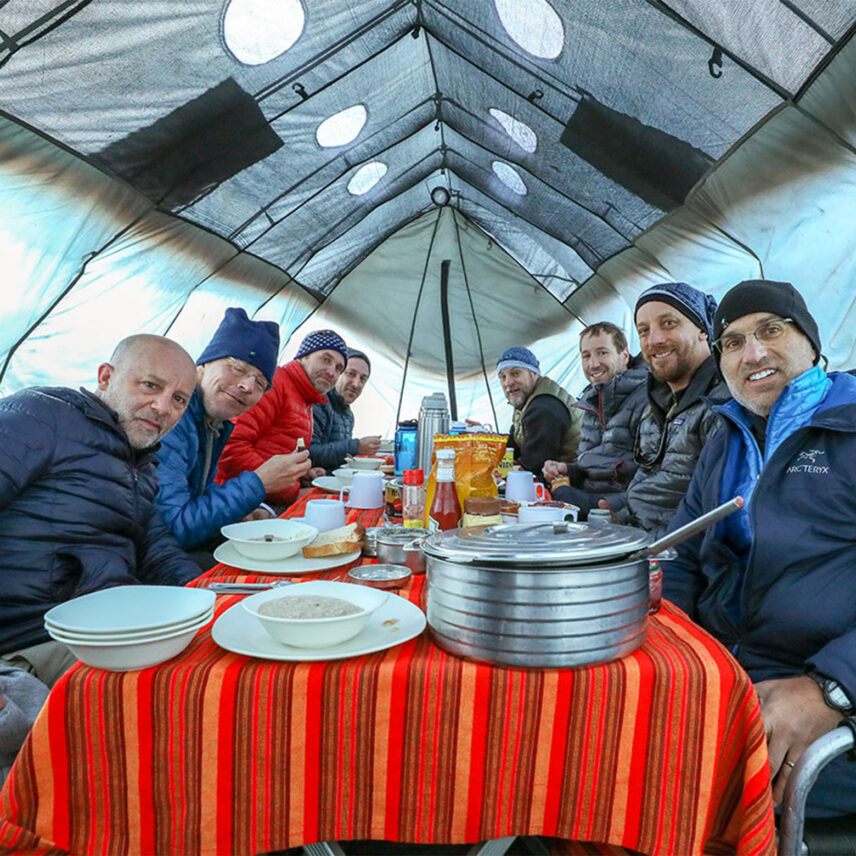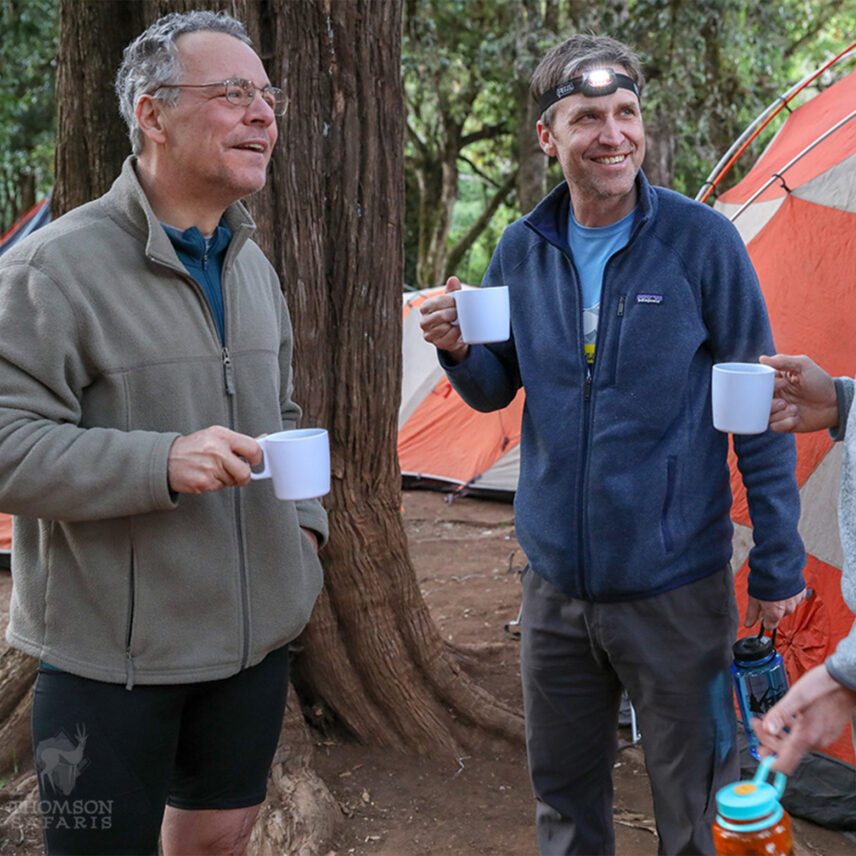For many trekkers, the food menu on the way up Kilimanjaro is an afterthought—you have a mountain to climb after all! There’s gear, guides, tents, routes, and more to consider. How important are breakfast, lunch, and dinner in the grand scheme of things?
Believe it or not, they’re tremendously important and can impact your summit success.

Photo: Dave Marchick
Your Appetite Decreases at Altitude and You Tend to Eat Less
As you gain altitude, you tend to lose your appetite. That’s not just conventional wisdom, it’s a studied phenomenon. The Journal of Applied Physiology found that simulated ascents “[appeared] to be associated with a change in the attitude toward eating and with a decreased appetite and food intake.”
The higher you go, the less you’ll want to eat and the less you may actually eat. That’s not a recipe for success when you’re burning thousands of calories hiking. A 180-pound trekker with a 20-pound pack can burn 3,400 calories during an average day of hiking on Kilimanjaro.
If you don’t make up the lion’s share of those calories, you may sap your energy, feel more sluggish, and have a tougher time reaching the summit. The trail becomes increasingly difficult and energy intensive late in the trek, too. You’ll need your strength (and a lot of food) to get through those parts.

Photo: Terry Nolan

Photo: Amy Czarnecki
The Less You Eat While Ascending, the More Severe Your Altitude Symptoms May Become
We often tell guests it’s not the straightforward physical challenge that keeps many climbers from conquering Kilimanjaro. It’s the effect altitude has on the body.
Low appetite, nausea, fatigue, dizziness, and headaches are the common, and usually mild, effects of acute mountain sickness (AMS). Not eating well can make these symptoms more severe, though. The European Journal of Nutrition published a study concluding that “reduced energy intake after rapid ascent to high altitude is associated with AMS severity.”
All that being said, it’s very important to eat a lot on Kilimanjaro despite not having much appetite. That’s why Thomson serves great food.

Photo: Dave Marchick
Your Food on Kilimanjaro
Thomson’s menus are designed by a nutritionist and a trained chef for flavor, variety, and the nutritional content you need for a high-altitude trek. Let’s get into the details with one day’s sample menu.
Breakfast
Eggs made to order
Hash browned potatoes
Banana bread/toast
Oat and millet porridge
Fresh fruit
Hot coffee, tea, cocoa
Lunch
Hearty leek and potato soup
Grilled cheese and tomato sandwiches
Crudités, salami, fresh fruit
Afternoon tea
Hot coffee, tea, cocoa
Cookies, popcorn, roasted nuts
Dinner
Savory pumpkin soup
Italian-style lasagna
Green bean salad
Pineapple Romanoff
This is just one example. The menu is different every day, but all meals are designed with a Western palate in mind. The result: a group of full and happy trekkers ready to get to the top of the mountain. Take it from them:
“Thomson provided us with 5-star restaurant quality food, it was very healthy and nutritious.”
—Robert Hand, Western Approach
“The food was beyond expectations. Who knew you could eat so well on a mountain!”
—Scott and Rebecca McCaffrey, Umbwe Route
“Our chef (Godwin) was a magician! I don’t know how he did it, but to make lasagna one night, and a garlic aioli for chicken tempura another night, while at 14,000 ft., and using 3 butane barrel burners…well…it was a sight to behold…and the taste was equally impressive!”
—Gregg Shallan, Grand Traverse

Photo: Dave Marchick
A Note on Specialty Diets
Are you a vegetarian? A vegan? Gluten sensitive? The chefs on the mountain has formulated menus for it all and happily accommodate dietary preferences with advance notice.
